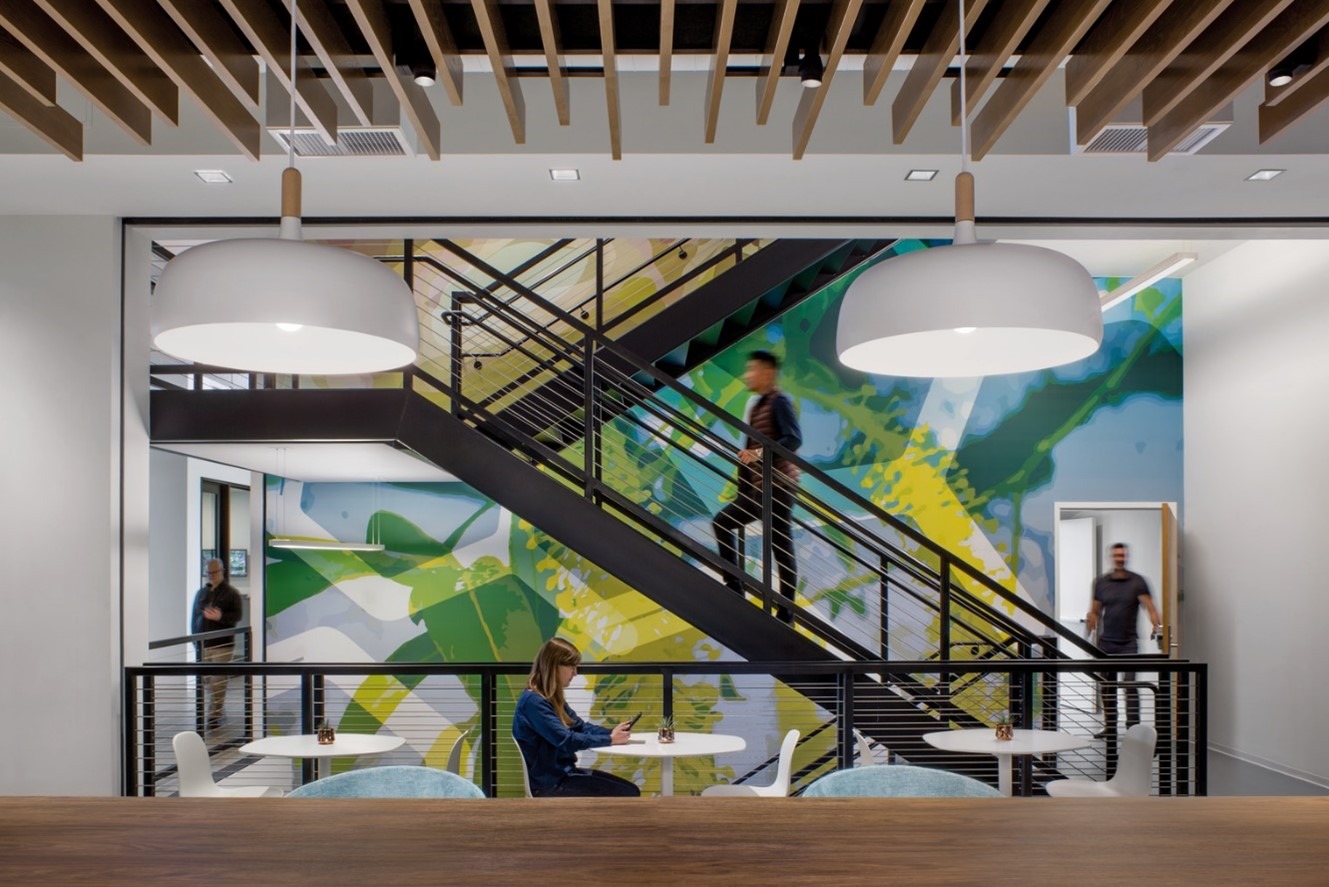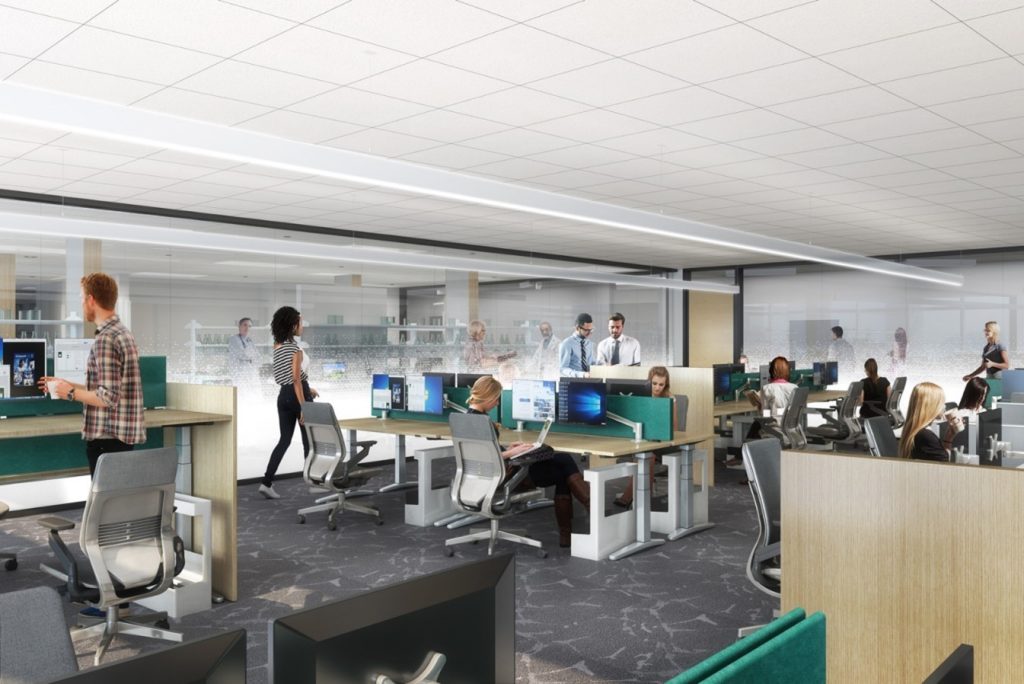
Digital by Design: Next Generation Scientific Workplace for the Lab of the Future
Creating a New Vision for Scientific Workplace Environments
The scientific workplace is evolving with an increasing focus on collaboration, inclusivity, and interdisciplinary research. Scientists from different fields and specialties are coming together to solve complex problems, necessitating a new type of lab that promotes teamwork and idea-sharing. This has led to the rise of open lab spaces with flexible, modular designs that can quickly be adjusted to meet the constantly changing needs of science.
These modern scientific workspaces are equipped with advanced technologies like robotics, cloud-based solutions driven by artificial intelligence (AI) & machine learning (ML), and digital connectivity, enabling scientists to automate routine tasks and gain access to vast amounts of data. Additionally, these technologies provide scientists with powerful tools to analyze and interpret data, allowing for faster breakthroughs.
Moving Non-Lab Functions out of the Lab
Most non-research activities have already transitioned from the lab bench to workspaces better suited for computational work, data analysis, writing, and collaboration. Some companies, including AstraZeneca Pharmaceuticals, collocate scientists with operational departments such as legal, marketing, and sales to promote knowledge sharing and capitalize on the advantages that come from combining them. At AstraZeneca’s Lab and Office Facility (pictured above) in South San Francisco, central gathering spaces, stairways, and conference and lounge areas encourage social interaction and idea-sharing.2
Tailoring Space for Innovation & Inclusion
Tech R&D companies are investing in state-of-the-art research labs to fuel collaboration and innovation. These next-generation labs feature open, modular spaces that can be reconfigured on-demand to support collaboration or focused work, while smart technologies allow workspaces to be tailored to the precise needs of scientific research.
Lab managers and designers are putting even greater emphasis on ergonomics, safety, and sustainability in developing the lab of the future. This shift in focus stems from the recognition that these factors can profoundly impact laboratory productivity, profitability, and the well-being of the researchers.
Promoting workplace diversity, equity, inclusion, and accessibility (DEIA) is essential in today’s world. HOK’s research suggests that the key to fostering an inclusive workplace ecosystem is providing employees with options regarding where and how they work. It is also crucial for organizations to consider the needs of individuals with neurodivergence.
Studies suggest that an estimated 15-20% of the world’s population exhibits some form of neurodivergence, including conditions such as autism spectrum disorder (ASD), attention deficit hyperactivity disorder (ADHD), and dyslexia. When designing labs and workspaces, labs should focus as much on the users as the science.
Understanding the connection between multi-dimensional stimulus triggers and design elements is vital to creating an accommodating and stimulating environment for individuals with neurodivergence and can benefit all employees.
By creating highly flexible workspaces optimized for productivity, safety, and the diverse needs of employees, these companies are pioneering work environments engineered for the future of scientific R&D.

Sanofi Cambridge Crossing, Cambridge MA3
The Next Generation Lab: Safety, Connectivity & Efficiency
As the world of science and technology continues to evolve, the need for labs that are safe, digitally enabled, and efficient has never been greater. We are entering a new paradigm of the lab, where the latest technologies, such as AI, automation, predictive modeling, data visualization, smart building systems, and cloud computing, are ushering in a new era for laboratories and providing scientists with powerful new tools to conduct their work.
Eight technological trends that are transforming the ways scientists work and shaping the future of research include:
- Automation of manual lab processes improves accuracy and efficiency.
- Robotics provide enhanced functionality, safety, and increased throughput.
- Virtual and Augmented Reality data analysis and visualization technologies for better insights and decision-making.
- Cloud-based SaaS allows for scalable infrastructure, data security, accessibility, and real-time collaboration to increase productivity and accelerate research.
- Connectivity facilitates the seamless transfer of data, enhanced regulatory compliance, and data-centric lab workflows.
- Smart devices provide real-time monitoring of processes, environmental control and enable remote access to data and equipment.
- Smart building systems improve security, optimize space utilization, and allow real-time occupancy management.
- Sustainable labs create eco-conscious, high-performance workplaces that use energy-efficient devices and on-demand resource management to reduce their environmental footprint. These green initiatives help businesses to reduce waste, optimize energy usage, and promote responsible resource management.
In today’s fast-paced and digitally reliant world, laboratories in the life science industry must achieve full digital connectivity. However, despite significant advancements in technology, the results of Astrix’s 2022 market research study on digital enablement reveal that most labs need help with this challenge.4 Statistics show that only 11% of surveyed labs have achieved full digital connectivity, while 30% have mostly siloed technologies resulting in outdated and redundant data management systems.
Isolated lab systems lead to manual work and critical data loss while reducing effective collaboration opportunities. Therefore, it is essential for labs to re-evaluate their digital strategies to break down silos and achieve full connectivity. By doing so, labs can streamline communication, automate manual work, eliminate redundancies, and enhance data-sharing capabilities. Ultimately, this can increase overall productivity and enable labs to work collaboratively toward achieving the best scientific outcomes.
Designing the Digital Lab of the Future
As life science R&D organizations operate on a global scale with increasing external collaboration, it has become imperative to establish an integrated digital lab that can manage the bi-directional flow of data across multiple business and informatics platforms, all while ensuring data security and regulatory compliance. Achieving full digital connectivity requires a comprehensive and scalable system architecture that integrates all processes, systems, personnel, and data, truly transforming lab environments. The rapid pace of life science R&D demands that organizations adopt digital connectivity and embrace its potential, as it can substantially improve efficiency, quality, and speed to market.
These technologies have a multifaceted impact on lab spaces as well. While many organizations have streamlined workflows and created more efficient use of space required for research, others need more sophisticated infrastructure and specialized equipment that increase the footprint needs. For example, HOK recently designed space for a pharmaceutical company reliant on robots for bespoke support. As automation and robotics take on more work traditionally completed by lab techs and support staff, the need for ultra-flexible lab spaces that integrate AI-powered research tools and systems becomes paramount.
Conclusion
The next-generation laboratory is designed with a focus on sustainability, accessibility, and collaboration. The lab’s design aims to create a high-performance workplace that enables researchers to be productive, engaged, connected, and happy, whether working remotely or in the lab. The lab’s greater emphasis on accessibility and inclusivity accommodates different types of researchers, including those with disabilities, promoting diversity in the scientific community.
Moreover, the lab’s emphasis on collaboration, knowledge sharing, and open workspaces encourages scientists from different disciplines to interact and discuss their research, leading to innovation and new approaches to R&D. The lab’s focus on data-centric workflows incorporating AI/ML and virtual and augmented reality technologies allows researchers to visualize and interact with their data in a more immersive way, leading to better decision-making and more informed insights.
The future of the laboratory is here. With the advent of next-generation workspaces, researchers have a highly advanced and efficient research environment that leverages technology to increase efficiency and sustainability while encouraging inclusivity and knowledge sharing. With its cutting-edge technologies, this new environment has the potential to revolutionize the entire research landscape, making it easier for researchers to collaborate, share ideas, and make groundbreaking discoveries.
About HOK
HOK is a renowned global design, architecture, engineering, and planning firm that employs a team of approximately 1,600 individuals situated across 26 offices spanning three continents. The firm’s core mission is to design innovative and sustainable buildings and spaces that respond to the needs of people and the environment. HOK’s designers are rooted in technical excellence, driven by imagination, and focused on a solitary goal: to deliver solutions that inspire clients and communities. HOK’s Science + Technology practice specializes in creating spaces that advance innovative scientific discovery in buildings of every shape and size. To learn more about HOK, visit www.hok.com and www.hok.com/projects/market/science-technology/.
About Astrix
Astrix is the unrivaled market leader in creating & delivering innovative strategies, technology solutions, and people to the life science community. Through world-class people, process, and technology, Astrix works with clients to fundamentally improve business, scientific, and medical outcomes and the quality of life everywhere. Founded by scientists to solve the unique challenges of the life science community, Astrix offers a growing array of fully integrated services designed to deliver value to clients across their organizations. To learn the latest about how Astrix is transforming the way science-based businesses succeed today, visit www.astrixinc.com.
References:
1J. Cooper, T.O’Connell, and R.Williamson, “Trends in the Scientific Workplace: The Shape of Labs to Come,” 2022, https://www.hok.com/ideas/publications/trends-in-the-scientific-workplace-the-shape-of-labs-to-come/, accessed May 5, 2023.
2HOK, “AstraZeneca Lab and Office Facility,” 2022, https://www.hok.com/projects/view/astrazeneca-lab-and-office-facility/, accessed May 8, 2023.
3HOK, “HOK Designing Life Sciences Research Hub for Sanofi,” March 15, 2022, HOK Designing Life Sciences Research Hub for Sanofi – HOK, accessed May 10, 2023.
4Astrix, “2022 Laboratory Informatics, Progress Snapshot on Enabling the Digital Lab of the Future,” June 2022, https://www.astrixinc.com/wp-content/uploads/2022/06/Progress-Snapshot-on-Enabling-the-Digital-Lab-of-the-Future-v4a.pdf, accessed May 8, 2023.
Case Study: LabWare Centralized Data Review for a Global Biopharmaceutical Company
Overview A global biopharmaceutical company specializing in discovery, development,... LEARN MOREWhite Paper: Managing Data Integrity in FDA-Regulated labs.
New White Paper LEARN MORELET´S GET STARTED
Contact us today and let’s begin working on a solution for your most complex strategy, technology and strategic talent services.
CONTACT US



